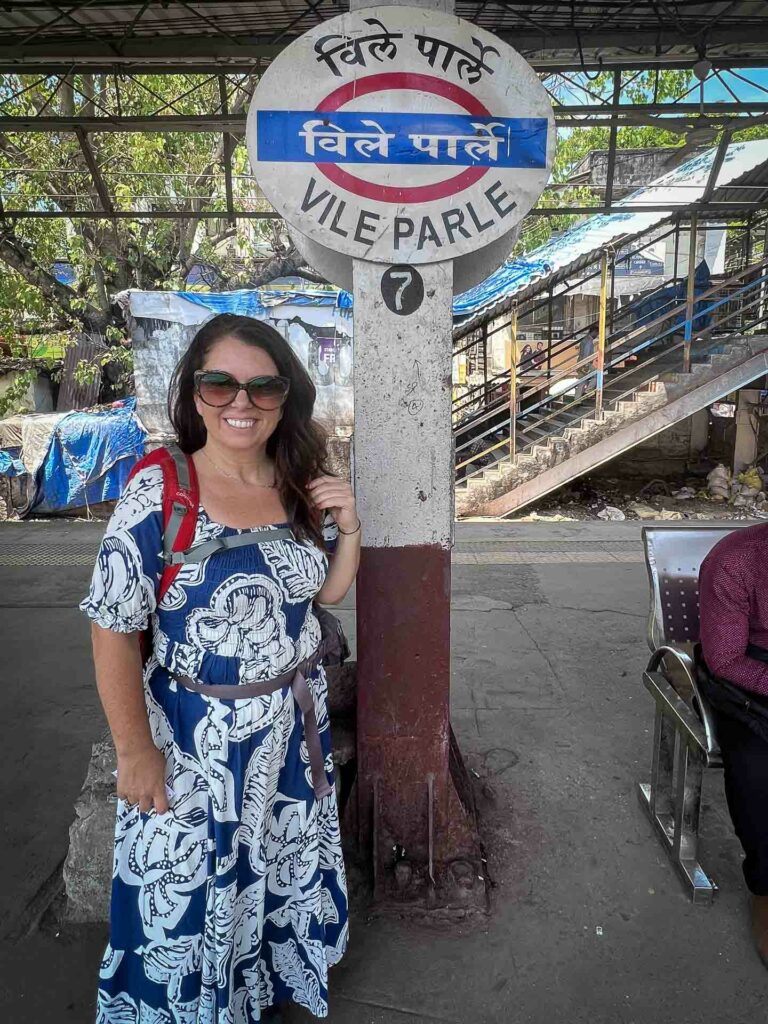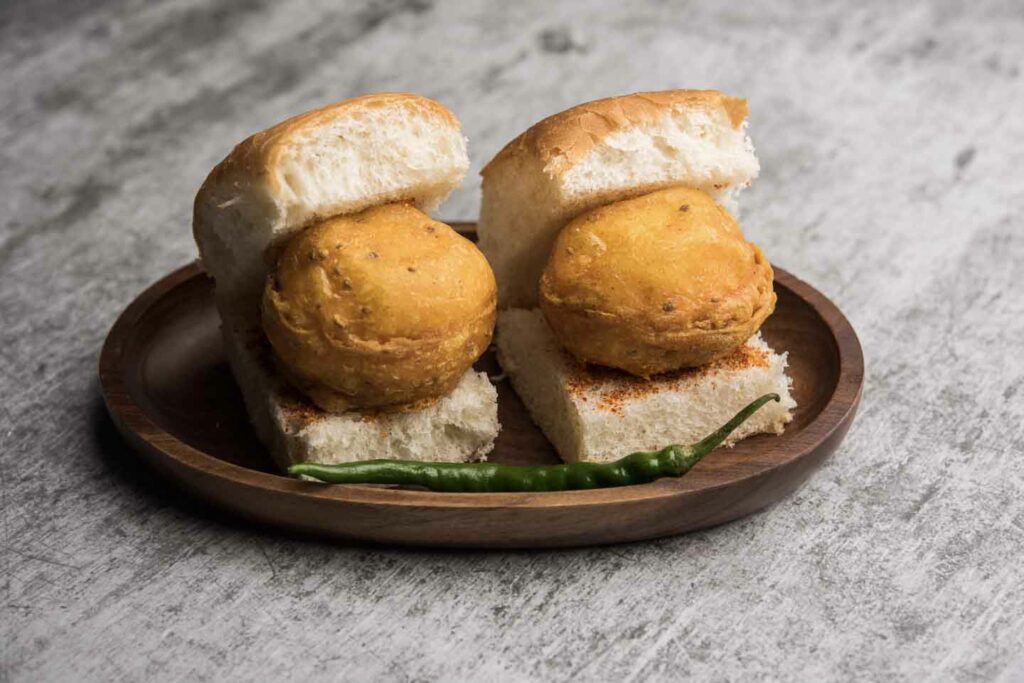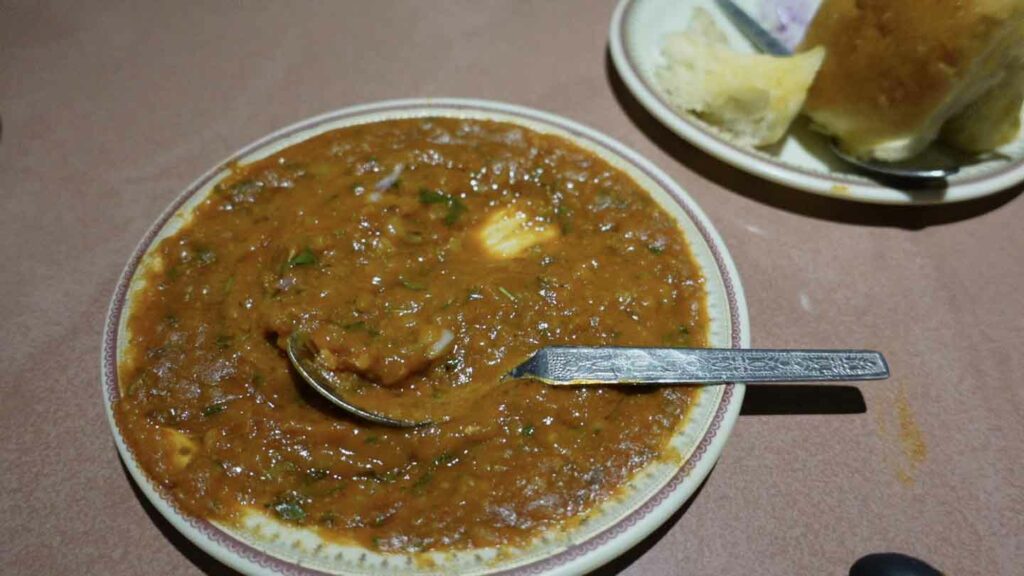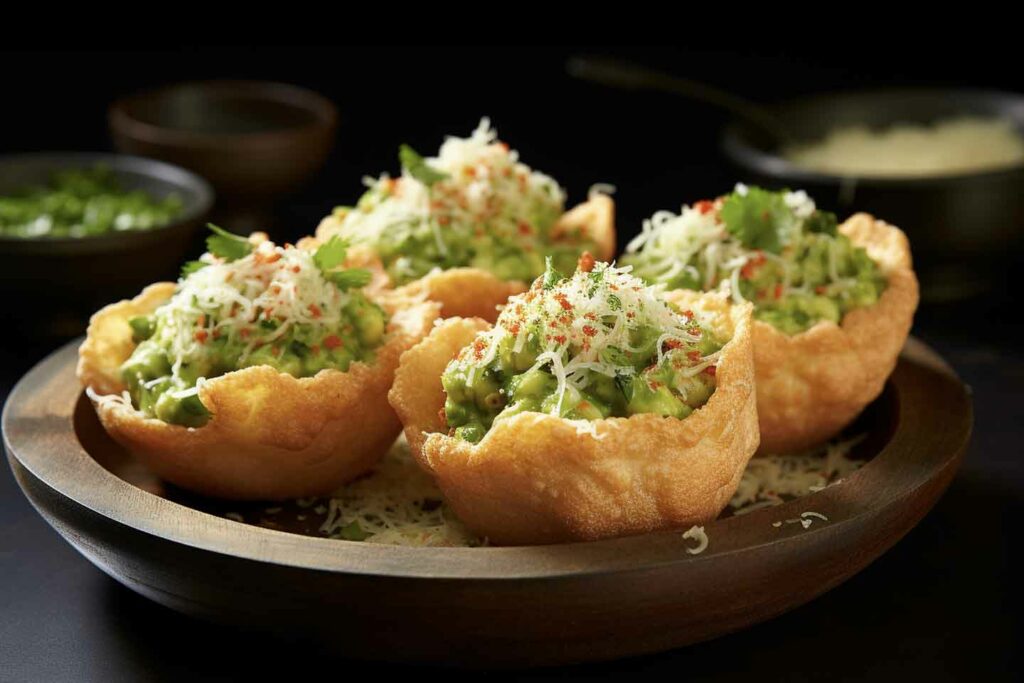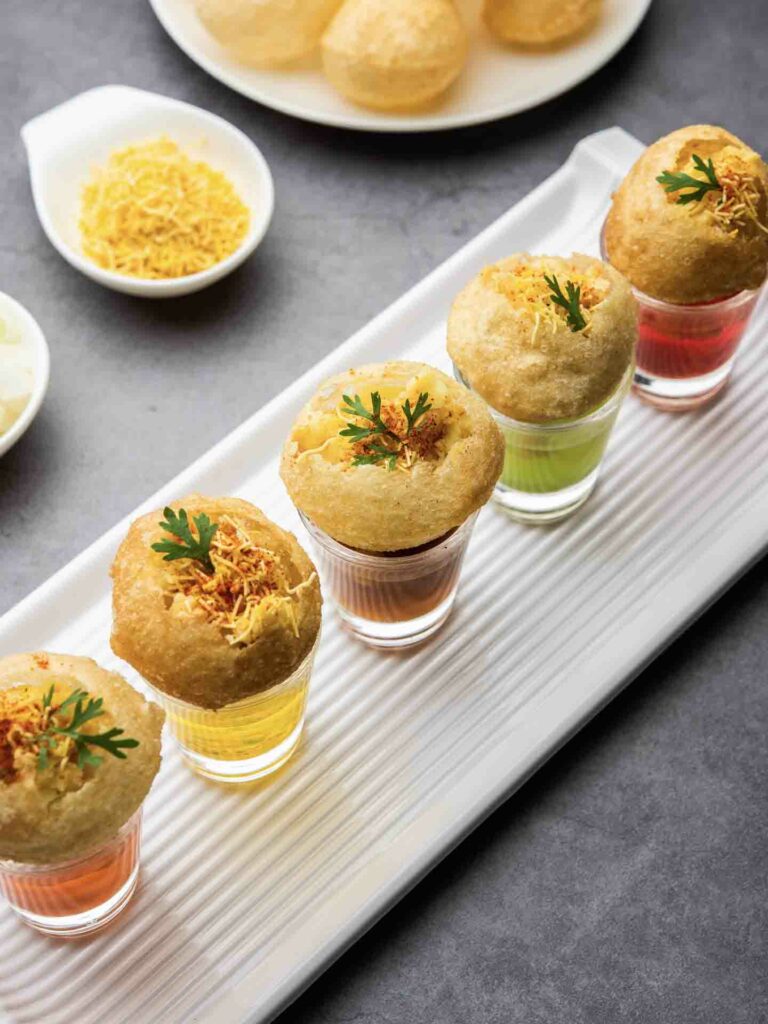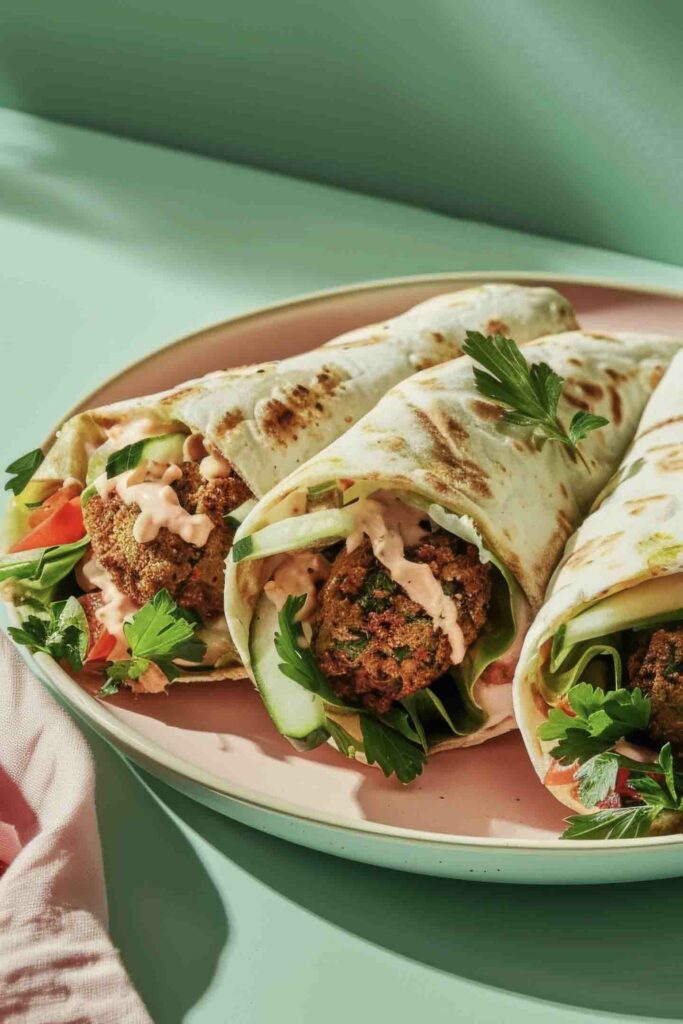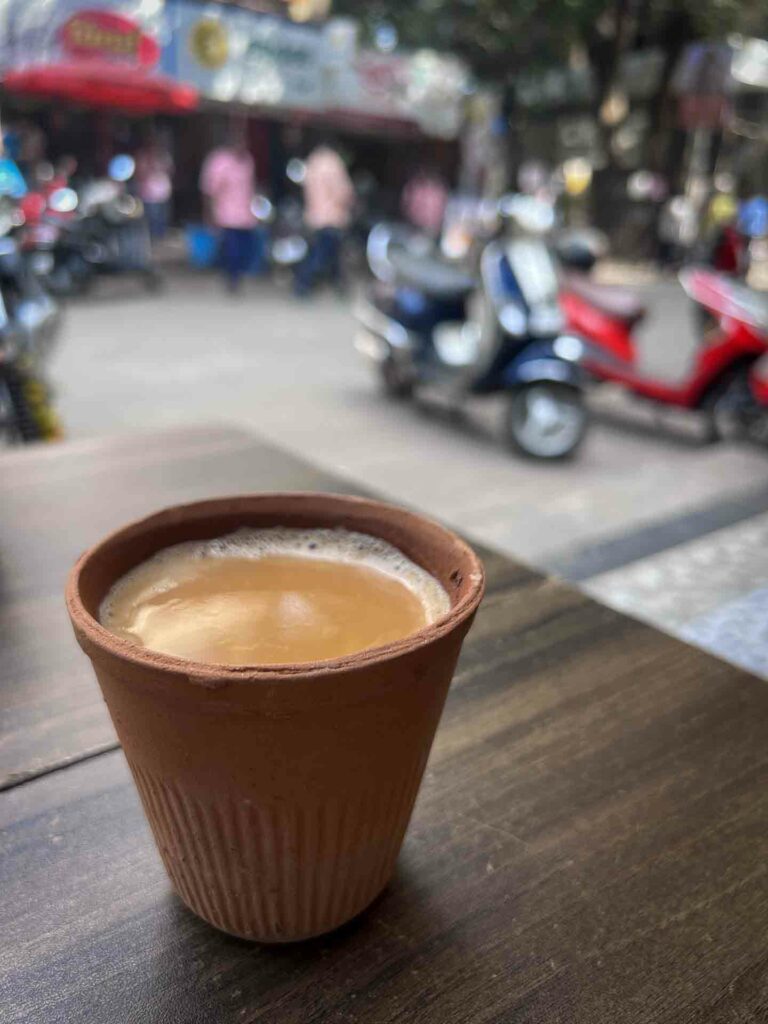Mumbail street food runs through the city’s veins like its famous local trains. It’s not about having a cheap meal, but eating some of the best food in the city.
Walk down any street and you’ll smell spices sizzling on tawa griddles. You’ll hear vendors calling out their specialties. You’ll see office workers grabbing quick bites between meetings.
The street food scene in Mumbai grew out of necessity for quality food on the go.
It started with mill workers needing cheap, filling meals. Vendors set up stalls near textile mills in the 1800s.
They created portable dishes that workers could eat standing up. These foods had to be tasty enough to make people forget their long work days.
The city’s street food scene exploded when people from different regions moved here for work. Each community brought their recipes.
Eating Safely in India
Then something magical happened. These dishes mixed together and became something completely new. And so more people started eating on the street because it was known to have the most exciting food.
Today, Mumbai street food feeds everyone from construction workers to CEOs. It brings people together across social lines.
Rich and poor stand side by side at the same stall. They argue about cricket while eating the same food.
Mumbai Culinary Influences
Mumbai’s street food tells the story of a port city:
- Traders from Gujarat brought their sweet and savory combinations.
- Portuguese colonizers introduced bread and potatoes.
- Parsi refugees from Iran added their egg dishes and unique spice blends.
The city’s coastal location means fresh coconut appears in many dishes. Tamarind gives that tangy twist Mumbai loves. Green chilies provide heat without overpowering other flavors.
Unlike Delhi’s heavy meat dishes or South India’s rice-based foods, Mumbai street food focuses on quick preparation.
Mumbai’s Marathi roots show up in the use of goda masala, a sweet spice blend. Gujarati influences appear in the love for mixing sweet and savory flavors in one dish.
This combination creates taste profiles you won’t find anywhere else in India.
If it’s your first time visiting India it can be intimidating to eat street food. You don’t want to take unnecessary risks that could ruin a holiday. My first time in India was a taking a luxury train, what an introduction to the country.
The great thing is that I was able to try a lot of traditional Indian food so it was a thrill. Taking Asia rail tours is an adventure of a lifetime.
The food on the regular trains is traditional and basic, while food in the first class/luxury train options takes authentic food to the next level.
Look out for these foods on your next adventure.
Must Try Mumbai Street Food
Vada Pav | वडा पाव
This is basically Mumbai’s hamburger. I say this out of respect because westerners love hamburgers, especially when done well.
A deep-fried potato dumpling sits inside a soft bread roll. The vada gets made from mashed potatoes mixed with ginger, green chilies and mustard seeds. Vendors coat it in gram flour batter before frying.
The combination creates a perfect texture contrast. Crispy outside meets fluffy potato inside. The pav bread soaks up spicy chutneys. Most vendors serve three chutneys – green coriander, sweet tamarind and fiery red garlic.
A Gujarati vendor named Ashok Vaidya created the first vada pav stall in 1966. He set up outside Dadar train station. The combination of Maharashtrian vada and Portuguese pav bread created Mumbai’s most famous food.
Locals eat vada pav at small roadside stalls, not fancy restaurants. The best ones have long lines of office workers during lunch breaks.
Where to Eat Vada Pav:
Ashok Vada Pav Opposite Kirti College, Dadar West, Mumbai 400028
Traditional Varanasi Food
Misal Pav | मिसल पाव
Spicy sprouted lentil curry served with bread rolls. The misal contains mixed sprouts cooked with onions, tomatoes and a special spice blend. Vendors top it with farsan (crunchy mix), chopped onions and lemon juice.
This dish packs protein from sprouts and complex carbohydrates from bread. The spices aid digestion and boost metabolism. Many people eat it as a healthy breakfast option.
Health-conscious office workers love misal pav for its nutritional value. It gives sustained energy without making you feel heavy.
Where to Eat Misal Pav:
Aaswad Dadar West, opposite Shivaji Park, Mumbai 400028
Pav Bhaji | पाव भाजी
Thick vegetable curry served with buttered bread rolls. The bhaji contains mashed potatoes, tomatoes, onions, peas and cauliflower. Vendors cook everything together with plenty of butter and pav bhaji masala spice blend.
The curry has a rich, tangy taste from tomatoes and tamarind. Butter makes it creamy. The spice blend adds warmth without too much heat. Vendors serve it with diced onions and lemon wedges on the side.
This dish started in the 1850s as a quick meal for textile mill workers. Vendors would use leftover vegetables and mash them together. The Portuguese bread made it filling enough for hard physical work.
Where to Eat Pav Bhaji:
Sardar Refreshments Tardeo Road, near Elphinstone Bridge, Mumbai 400034
Holi Festival Food
Bhel Puri | भेल पूरी
Crunchy puffed rice mixed with sev, chopped onions, tomatoes and chutneys. Vendors add boiled potatoes and raw mango pieces. Sweet tamarind chutney balances spicy green chutney made from coriander and mint.
Every bite gives different textures. Puffed rice stays crispy. Sev adds more crunch. Soft potatoes provide substance. The chutneys coat everything with sweet and spicy flavors.
Bhel puri represents Mumbai’s love for mixing textures and temperatures. Vendors serve it in small paper cones. You need to eat it immediately before the puffed rice gets soggy.
The dish comes from Maharashtra’s traditional bhel recipe. Mumbai vendors added their own touches like different chutneys and fresh ingredients. Each vendor has their own bhel puri style.
Where to Eat Bhel Puri:
Babulnath Bhel Babulnath Road, near Hanging Garden, Mumbai 400007
Sev Puri | सेव पूरी
Small crispy puris topped with potatoes, onions, chutneys and lots of sev. Each puri is about the size of a large coin. Vendors arrange them on plates and add toppings in a specific order.
The puris stay crunchy under all the toppings. Sweet chutney provides richness. Green chutney adds freshness. Sev creates layers of texture. Everything combines in your mouth at once.
Sev puri needs to be assembled just before eating. The puris will get soggy if they sit too long with wet ingredients. Good vendors work fast to maintain the crunch.
Where to Eat Sev Puri:
Elco Pani Puri Centre Hill Road, Bandra West, Mumbai 400050
Pani Puri | पानी पूरी
Hollow, crispy puris filled with spiced water, chutneys and fillings. Vendors make the pani with tamarind, mint, coriander, ginger and spices. Each puri gets filled with boiled potatoes, chickpeas and boondi.
The first bite releases a burst of flavored water in your mouth. Sweet and sour tastes hit immediately. The crispy puri dissolves on your tongue. Soft potato filling provides substance.
You must eat each puri in one bite. Taking small bites makes the water spill everywhere. The whole experience lasts about three seconds per puri.
Pani puri started in different parts of India with various names. Mumbai’s version uses sweeter water than other cities. The balance of flavors reflects local taste preferences.
Where to Eat Pani Puri:
Ram Ashray King’s Circle, Matunga, Mumbai 400019
Navaratri Festival Food
Ragda Patties | रगड़ा पैटीज़
Ragda patties became popular during World War II when meat was scarce. Vendors created this protein-rich vegetarian alternative. The dish satisfied hunger during difficult times.
Spiced white pea curry served over potato patties. The ragda gets made from dried white peas cooked with onions, ginger and spices. Potato patties are shallow fried until golden and crispy outside.
The ragda has a thick, hearty texture with warming spices. Potato patties provide a crispy base that soaks up the curry. Vendors top everything with chopped onions, sev and mint chutney.
This combination gives you protein from peas and carbohydrates from potatoes. The spices help digest the heavy legumes. It’s filling enough to work as a complete meal.
Where to Eat Ragda Patties:
Pancham Puriwala S.V. Road, Santacruz West, Mumbai 400054
Maharajas Express
Dabeli | दाबेली
Spiced potato filling stuffed in burger buns with chutneys and garnishes. The potato mixture contains sweet tamarind chutney, spicy dabeli masala and pomegranate seeds. Vendors add sev, peanuts and fresh pomegranate on top.
The combination creates a sweet and spicy flavor profile. Soft potatoes contrast with crunchy peanuts and sev. Pomegranate seeds burst with juice in your mouth. The masala provides warmth without overwhelming heat.
Dabeli came from Kutch in Gujarat but Mumbai vendors adopted it completely. They serve it as a quick lunch or evening snack option.
The dish reflects Gujarat’s love for mixing sweet and savory flavors. Mumbai’s version often includes more garnishes than the original Kutchi recipe.
Office workers love dabeli because it’s filling and flavorful. You can eat it with one hand while walking to catch a train.
Where to Eat Dabeli:
Kareem’s Dabeli Mohammed Ali Road, Mumbai 400003
Kheema Pav | कीमा पाव
Spiced minced mutton curry served with bread rolls. The kheema gets cooked slowly with onions, tomatoes, ginger-garlic paste and garam masala. Vendors finish it with fresh coriander and serve it with buttered pav.
The kheema has a rich, savory taste from slow cooking. Spices penetrate the meat completely. The curry has enough gravy to soak into the bread without being too wet.
This dish represents Mumbai’s Muslim community’s contribution to street food. The cooking technique comes from Mughlai cuisine but uses local spices and ingredients.
Kheema pav became popular in areas with large Muslim populations. From there it spread to the entire city as people discovered its satisfying taste.
Many vendors only serve kheema pav during lunch hours when people want something substantial. It’s too heavy for evening snacking.
Where to Eat Kheema Pav: Persian Darbar Grant Road, Mumbai 400007
What to Wear in India
Usal Pav | उसळ पाव
Sprouted lentil curry served with bread rolls. Different from misal, usal has a thicker consistency and uses different spices. Vendors cook mixed sprouts with onions, tomatoes and usal masala.
The curry has an earthy flavor from the sprouts. Spices provide warmth without being too hot. The thick consistency means it won’t make the bread soggy quickly.
Usal represents traditional Maharashtrian home cooking adapted for street food. Vendors simplified the recipe for quick preparation but kept the authentic flavors.
The dish provides complete protein from the combination of different sprouted lentils. It’s considered healthy street food that doesn’t compromise on taste.
Early morning vendors often serve usal pav as a breakfast option for people heading to work. It provides sustained energy for the day.
Where to Eat Usal Pav:
Mama Kane Pune Station Road, Pune 411001

Bombay Sandwich | बॉम्बे सैंडविच
A Bombay sandwich is Mumbai’s iconic street food – a vegetarian delight featuring layers of boiled potato, cucumber, tomato, beetroot, and onion stacked between white bread slices.
The vegetables are seasoned with green chutney (mint-cilantro), spicy dry garlic chutney, and butter, then grilled until golden and crispy in a sandwich press.
Often finished with chaat masala and served with additional chutney, these sandwiches are affordable, flavorful, and ubiquitous across the city’s streets.
Where to eat Bombay Sandwich: Bademiyan near CST station or the legendary Sandwich King stalls
Diwali Festival
Keema Ghotala | कीमा घोटाला
Scrambled eggs mixed with spiced minced mutton. Vendors cook eggs and kheema together on a flat griddle. They add onions, tomatoes, green chilies and fresh coriander. The mixture gets served with buttered bread or roti.
The eggs bind everything together while staying fluffy. The kheema adds rich, meaty flavor. Onions provide sweetness and crunch. The combination creates a protein-rich, satisfying meal.
This dish comes from Parsi cuisine but Mumbai street vendors made it their own. They serve bigger portions and add more spices than traditional Parsi recipes.
Keema ghotala works as breakfast, lunch or dinner. The high protein content makes it popular with people doing physical work.
Many vendors only make this dish to order because it needs to be eaten hot. Cold keema ghotala loses its appeal quickly.
Where to Eat Keema Ghotala: Cafe Goodluck FC Road, Deccan Gymkhana, Pune 411004
Sol Kadhi | सोल कढी
Pink-colored drink made from kokum fruit and coconut milk. Vendors blend kokum concentrate with fresh coconut milk, ginger, green chilies and salt. The drink has a beautiful natural pink color from the kokum.
Sol kadhi tastes sweet, sour and slightly salty at the same time. The coconut milk makes it creamy and rich. Kokum provides tartness similar to cranberries. Ginger adds a warming finish.
This drink comes from Konkan coastal cuisine. Mumbai vendors serve it as a digestive after heavy meals or as a cooling drink in hot weather.
Kokum has natural cooling properties according to traditional medicine. The drink helps balance spicy street food and aids digestion.
Many street food stalls serve sol kadhi to cleanse your palate between different dishes. It’s especially popular after eating spicy foods.
Where to Eat Sol Kadhi: Sindhudurg Kinara Dadar West, Mumbai 400028
Tawa Pulav | तवा पुलाव
Fried rice cooked on a flat griddle with vegetables and spices. Vendors use day-old rice and cook it with onions, tomatoes, peas and carrots. They add pav bhaji masala for flavor and serve it with raita and pickle.
The rice gets slightly crispy from cooking on the hot tawa. Vegetables provide color and crunch. The masala gives it a familiar Mumbai taste that people love.
Tawa pulav started as a way to use leftover rice and vegetables. Street vendors created this dish to avoid waste while making something delicious.
The cooking technique comes from Chinese fried rice but uses Indian spices and vegetables. This fusion represents Mumbai’s ability to adapt international dishes.
Office workers love tawa pulav for lunch because it’s filling and flavorful. It’s lighter than curry and rice but still satisfying.
Where to Eat Tawa Pulav:
Cannon Pav Bhaji Churchgate Station, Mumbai 400020
Frankie | फ्रैंकी
Roti wrapped around spiced filling with chutneys and onions. Mumbai frankies contain chicken, mutton or vegetable fillings cooked with onions and spices. Vendors spread green chutney on the roti before adding the filling.
The roti stays soft and pliable for easy eating. Fillings are well-spiced but not overpowering. Green chutney adds freshness and heat. Everything wraps together for a complete meal in your hand.
Frankies represent Mumbai’s fast-paced lifestyle. You can eat them while walking or in a moving train. They don’t require plates or utensils.
The concept comes from Middle Eastern wraps but Mumbai vendors used local ingredients and spices. Each vendor has their own signature frankie style.
Late-night food stalls serve frankies to people heading home from work or entertainment. They’re popular near train stations and bus stops.
Where to Eat Frankie:
Tibbs Frankie Linking Road, Bandra West, Mumbai 400050
Cutting Chai | कटिंग चाई
Small portions of milky tea served in small glasses. Vendors boil tea leaves with milk, sugar and spices like cardamom and ginger. The name comes from cutting regular portions in half to make it affordable.
It usually comes in clear glasses although mine was in a masala chai terracotta cup.
The tea is sweet, milky and strongly flavored. Spices provide warmth and aroma. The small portion lets you drink multiple cups throughout the day without feeling too full.
Cutting chai represents Mumbai’s tea culture adapted for working people. Small portions meant people could afford multiple cups on limited budgets.
Tea vendors became social hubs where people discuss politics, cricket and daily life. The shared experience of drinking cutting chai brings strangers together.
Every street corner has a chai vendor. The best ones have regular customers who come at the same time every day for their tea fix.
Where to Eat Cutting Chai:
Kyani & Co. Marine Drive, Fort, Mumbai 400001
Koliwada Prawns | कोळीवाडा प्रॉन
Spicy batter-fried prawns from the Koli fishing community. Large prawns get marinated in red chili paste, garlic and spices. Vendors coat them in semolina and rice flour batter before deep frying.
The prawns stay juicy inside the crispy coating. The marinade penetrates the meat with spicy, garlicky flavors. Semolina in the batter creates extra crunchiness.
This dish represents the Koli community’s traditional cooking methods. They’ve been fishing and cooking seafood in Mumbai for centuries before anyone else arrived.
Koliwada prawns became popular beyond the fishing community when other Mumbai residents discovered their incredible taste. Now vendors serve them citywide.
The best koliwada prawns come from areas near fishing villages where vendors get the freshest catch. Day-old prawns don’t have the same sweet taste.
Where to Eat Koliwada Prawns:
Gajalee Vile Parle East, Mumbai 400057
Tips for Eating Your Way Through Mumbai
Start your street food adventure slowly. Your stomach needs time to adjust to the spices and oil levels. Begin with milder dishes like vada pav before trying spicier options.
Look for stalls with high turnover. Fresh ingredients and hot oil make all the difference in taste and safety. Avoid places where food sits out for hours.
Eat during peak hours when locals eat. Morning breakfast stalls serve the freshest items. Evening snack time brings out the best vendors.
Don’t be afraid to ask vendors to adjust spice levels. Most will gladly make dishes milder or spicier based on your preference.
Carry cash in small denominations. Most street vendors don’t accept cards or digital payments. Having exact change speeds up service.
Follow the locals. If you see office workers or families eating somewhere, that’s usually a good sign. Tourist-focused stalls often compromise on authenticity.
Stay hydrated with fresh lime water or coconut water. Avoid tap water and ice from unknown sources. Stick to sealed bottles or drinks you see being prepared fresh.
